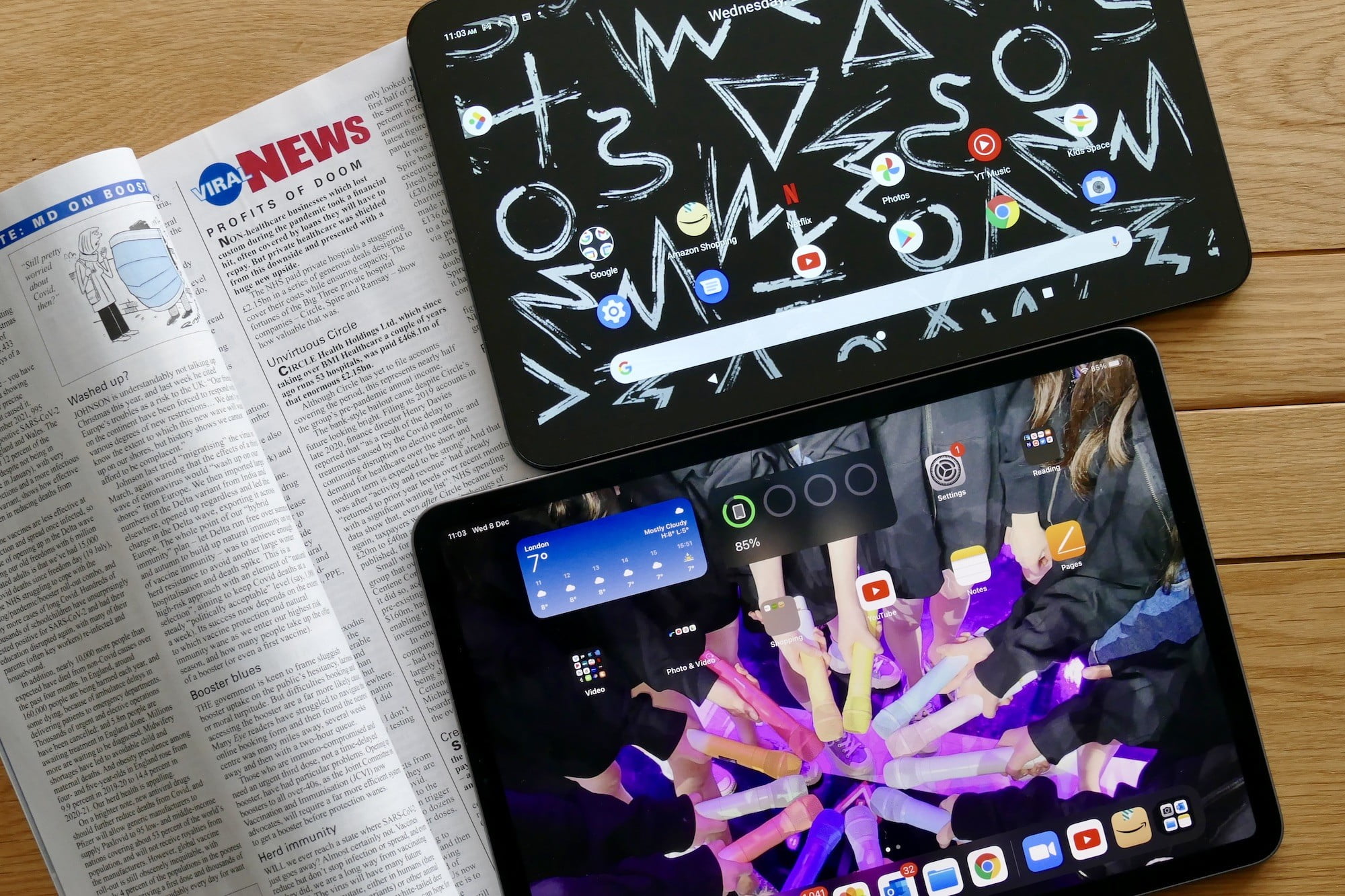The Nokia T20 has prompted a tablet epiphany. I have owned many different tablets over the years, with my lifestyle fitting the functionality they offer. Still, unfortunately, most of them have quickly been discarded due to never living up to expectations or failing to keep up with my usage. All except for the Apple iPad, that is. I’ve owned several generations, and none have been hidden away in the “tech drawer of doom.”
Over the last few weeks, I’ve been using the Nokia T20 tablet, and it has finally brought about that epiphany. I’ve refused to believe it for ages, but I now can safely say that if you want a tablet, it’s absolutely worth paying more to get an iPad.
So many tablets
I don’t know what it is about the tablet in general. Maybe it’s because it can seem more frivolous than a smartphone, but I have often thought I should be able to buy a cheapish one and have it to satisfy my relatively basic needs. Over the years, I have used, purchased, or reviewed tablets made by Samsung, Huawei, Xiaomi, Lenovo, Amazon, and a few others. The ones I’ve bought personally have been cheaper models, usually spotted in a sale, but absolutely none of them are in use today. Poor software, substandard screens, and creaky performance almost immediately put me off, and after using them for a bit, they’d get retired.
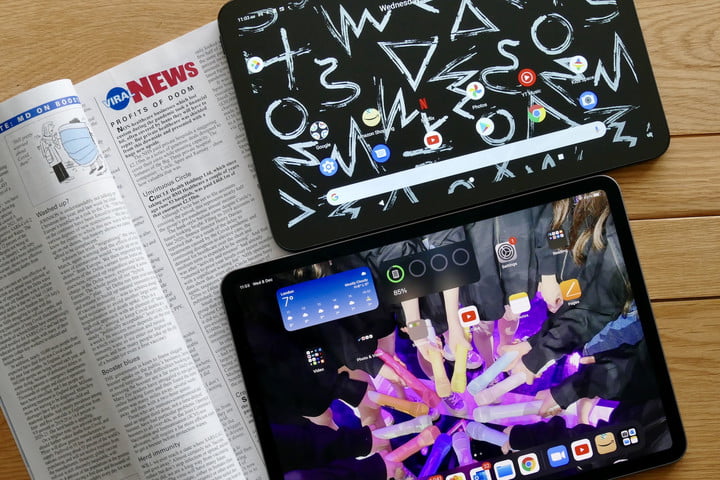
Also, during this time, I’ve owned a few Apple iPad models, including the original iPad, an iPad 2, an iPad 3, a massive 12.9-inch 2015 iPad Pro, and my current 2020 11-inch iPad Pro. That’s five years between upgrades for my most recent iPad purchases, and best of all, the old models live on in the care of my parents rather than being sent to the tech drawer of doom, including the original iPad. Neither the first iPad or iPad 3 are updated any more, and neither are compatible with most new apps, but they still work surprisingly well for tablets that are a decade old. Even the batteries still hold a decent charge.
This should already have been enough to prompt my epiphany, but even in the face of the overwhelming evidence that shows that splurging on an iPad instead of saving a little money and getting a cheaper Android tablet is the sensible thing to do, here I am with the Nokia T20. I still wanted to believe a modern, low-cost Android tablet from a major company could be a worthy alternative.
It’s not what you do with it
What do I do on a tablet? For the vast majority of the time, I watch YouTube and other streaming services, browse the internet using Chrome, read the news, and use some social networks and shopping apps like Amazon. More occasionally, I use it to edit video using LumaFusion, create documents, and make video calls over Zoom, Skype, and Google Meet. I don’t do anything, outside of the video editing, that a cheap tablet shouldn’t be able to do.
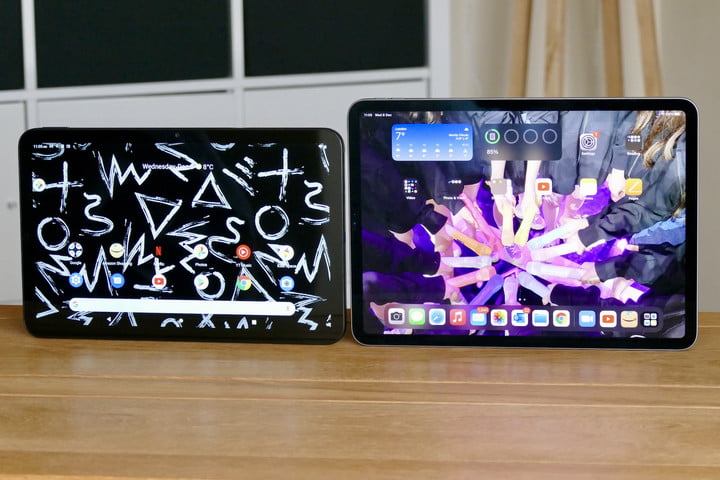
I currently use the 2020 11-inch iPad Pro, which cost $800 new. It’s absolutely faultless. The screen is fantastic, the performance is blistering, the software simple, and it’s so versatile I can use it for work if I want. The Nokia T20 costs $250, so obviously there will be a difference in performance, but the screen is almost as large as the iPad’s and it has a decent 1200 x 2000-pixel resolution, so if all I really do is watch video and use a few apps, it’s unlikely to be that different, right?
It’s definitely the main reason I wanted to try the Nokia T20 out. I love the iPad Pro, but still look at it as a very expensive product. It’s always in the back of my mind that I probably could get away with something much cheaper, seeing as I don’t really ask that much of it. Well, I can’t. Even the simplest of tasks is too much for the T20, and that feeling about tablets I couldn’t seem to shed all this time has now been properly banished.
Is the Nokia T20 bad?
No, the Nokia T20 isn’t a bad tablet. It does a few things well. The battery life has been great, with it remaining usable for at least a week on a single charge with daily use, and the 7.8mm thick case feels durable. I like Google’s Entertainment Space and Kids Space, too; they make using an Android tablet far more fluid than before. There’s also an acceptable amount of software support for the future, with security updates coming for the first three years.
But that’s really where the good news ends. The most basic thing I want to do with my tablet is to watch YouTube, but the T20 seems to make that simple task both unappealing and shockingly frustrating. The screen has a 60Hz refresh rate and, to my eyes — admittedly spoiled by high refresh rate screens on the iPad and various phones — is a blurred mess when you scroll through YouTube’s Home screen.
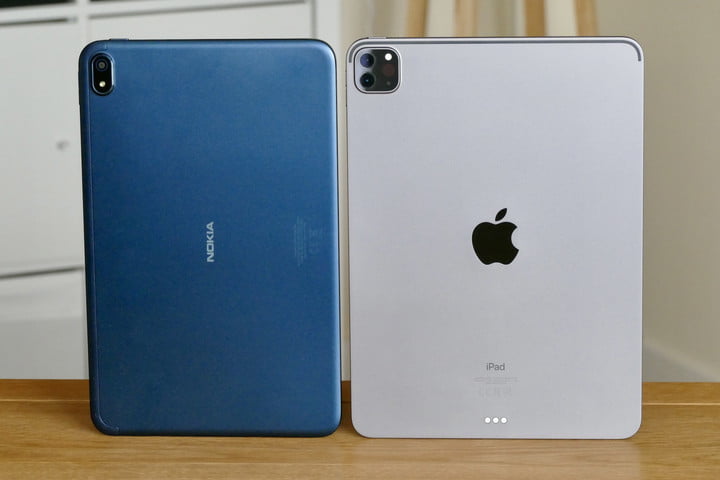
When you find a video to watch, the screen’s lack of brightness strikes you first, followed by the fact you can’t hear it unless you have the volume at maximum. After starting the video in one room, I moved with the tablet into my office, where the T20 promptly dropped the Wi-Fi signal. My iPad, sitting right next to it, still has adequate signal. Forced to leave the office, I continued doing some work research using Chrome, but only after manually reconnecting the Wi-Fi.
Performance is disappointing. I’m using the U.K. model with a Unisoc T610 processor, which I’m not familiar with at all. It’s usually a few seconds slower than the iPad when doing the same tasks, there are stutters throughout the operating system, and the 60Hz screen blurriness is almost always present. There is no part of the Nokia T20 that encourages me to use it, just like the many similar bargain tablets I’ve endured for only a few months at a time in the past. It’s an absolute world apart from the Apple iPad.
Sure, but money?
At this point, you’re probably thinking about that price difference. Of course, the iPad is technically superior to the Nokia T20 — it can cost four times as much. Absolutely true, but allow me to explain why this argument doesn’t really apply. If I had paid $250 for the T20 and found it didn’t connect to my Wi-Fi in a different room of my home, I’d be pretty mad. If it ruined my eyesight due to the blur from the dim 60Hz screen, I’d quickly decide not to use it. It would simply become yet another tablet that I wanted to enjoy but couldn’t.
I may own the iPad Pro, but you don’t have to buy such a flash model to get almost the same massively improved experience. The $329 iPad 10.2-inch is the cheapest iPad, so not really much more money than the T20, but I’d really recommend getting the $599 iPad Air with its better screen, smaller bezels, and newer processor. The iPad Pro is the ultimate iPad, and arguably the ultimate tablet, but it starts at $800. Yes, I know I’m saying spend more (a lot more) money, and you’ll get a better product, which is hardly groundbreaking information, but I don’t think I’ve ever come across such clear evidence for this rule as I have with tablets.
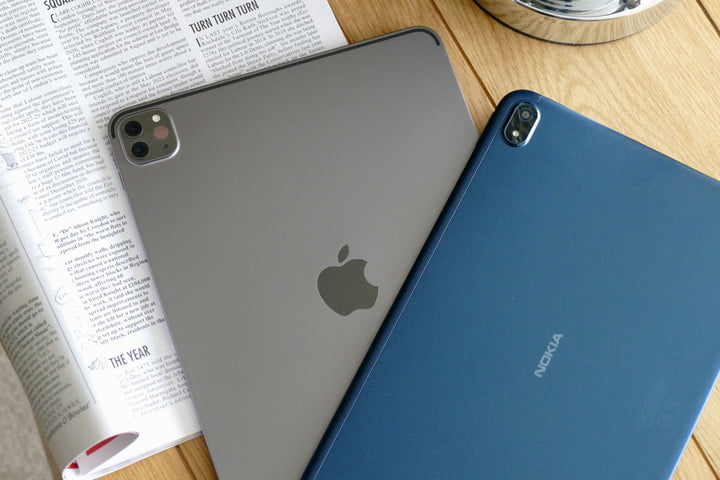
The Nokia T20 has proved to me that even if you’re only doing the basics on a tablet, then “saving” money by not buying an iPad will probably just mean you use it less, enjoy it less, and end up forgetting about it in less than a year’s time. My original 11 year-old iPad is still going today and while I wouldn’t necessarily want to use it myself, I also find it extremely unlikely that the Nokia T20 will still be as usable in 2032, let alone in 2024, when it stops getting security updates.
This isn’t a hit piece against the Nokia T20, or any cheap tablet, which I think can work well for kids. No, it is consumer advice from someone who has spent plenty of money making poor purchasing decisions, when I should have just made one decent decision in the first place. Yes, I’m telling you to spend more on your new tablet, but I genuinely believe it will save you money in the long run, and you’ll enjoy owning it a whole lot more.
